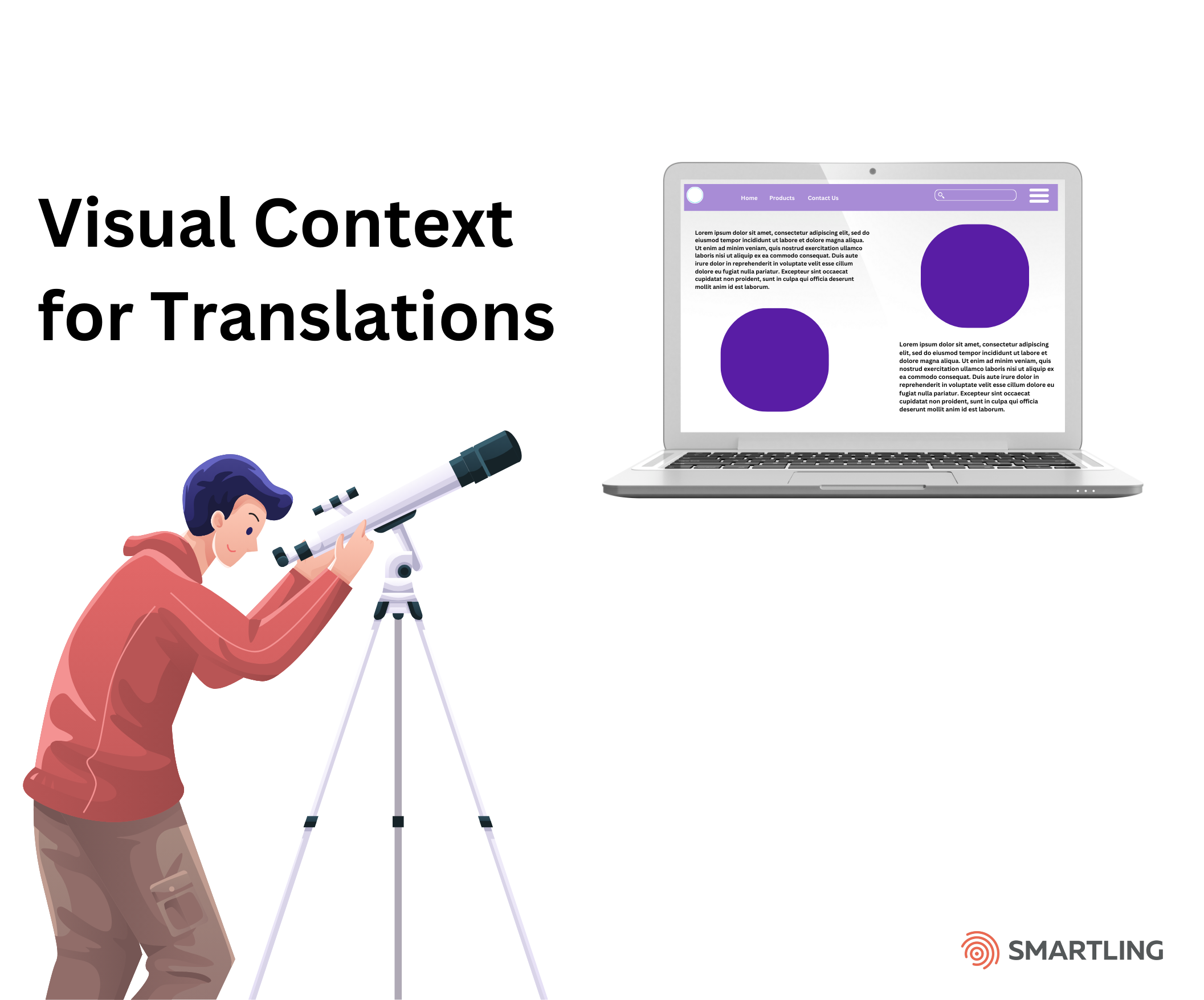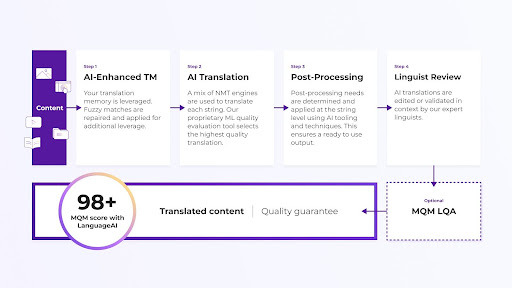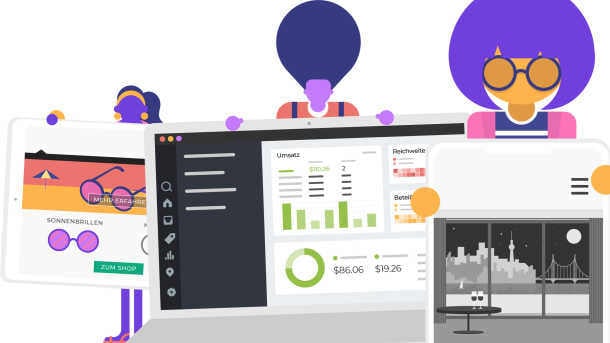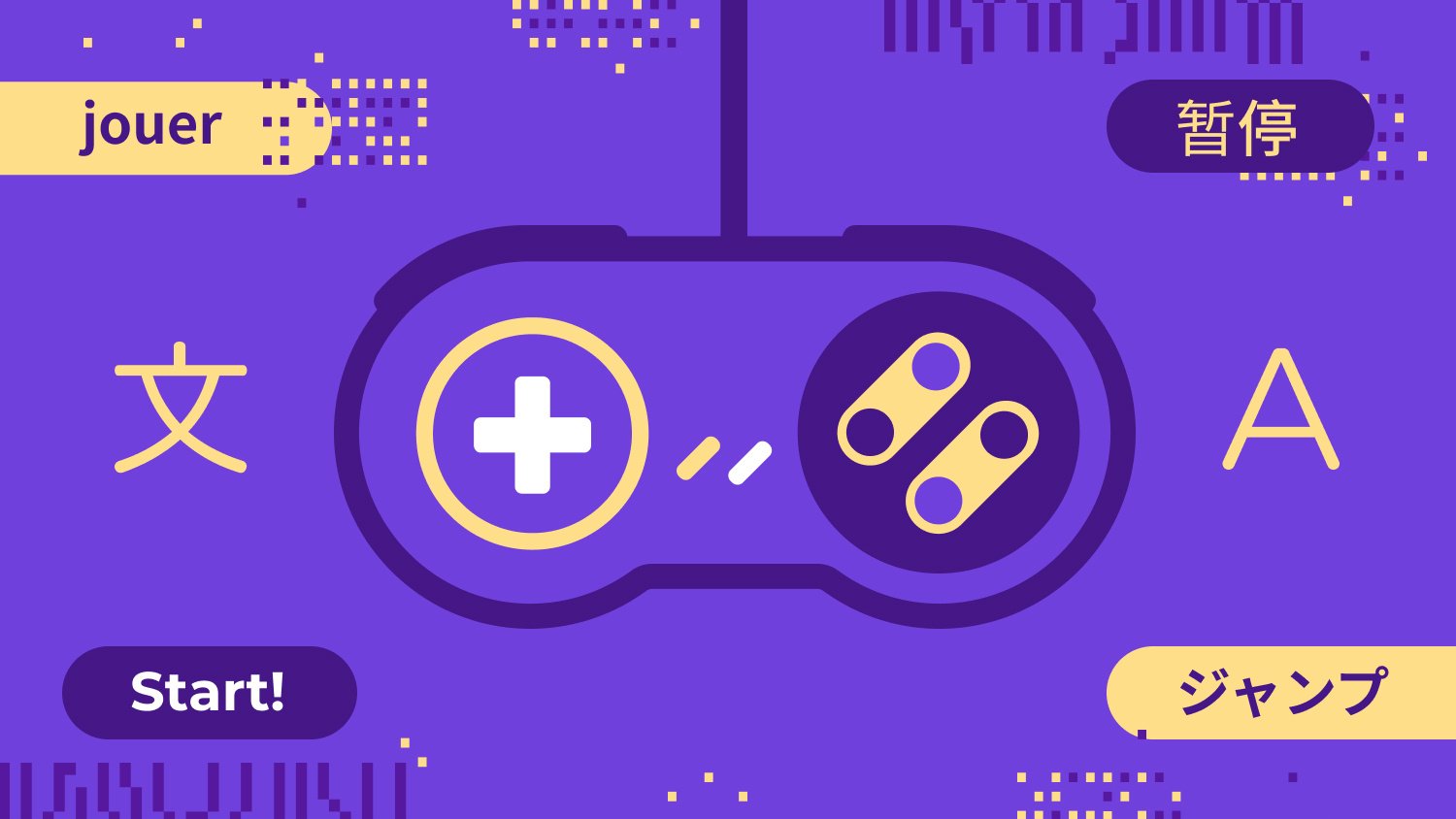Imagine that you read a book and then watch the movie adaptation afterward. You realize that the main character looks nothing like the novel's description, and the setting seems otherworldly. It’s an entirely different story, so the movie alienates fans.
The same can be true about localization. You can translate the perfect web page, but if the design, images, or videos are disconnected, it confuses visitors and hurts your conversion rate.
Computer-assisted translation (CAT) tools help to fill the gap by providing the visual context that translators need.
Using this technology and a combination of human expertise and AI translations, businesses can offer a localized experience for their multilingual audiences and reach more customers.
What is assisted translation?
CAT uses computer software and tools to help humans translate from one language to another.
These tools assist translators with time-consuming tasks. For example, features like translation memory make it easier to ensure consistency across translated texts. Translation memory reuses past translations to boost quality, save time, and reduce costs since you won’t have to pay twice for the same translations.
CAT tool features include:
- Translation memory (glossary): Store translated text so you can translate similar or identical sentences in the future.
- Automated quality assurance checks: Run checks to identify common errors, formatting issues, and inconsistencies.
- Collaboration abilities: Help team members translate side-by-side.
- Segmentation: Divide the source text into more manageable sections, either sentence-by-sentence or in stages.
- Terminology management: Build and maintain consistency in your translations by identifying specific terms for cultural relevance. Management can also help with preventing biases in language.
- In-context editing: Use visual references to understand how the text relates to the design, layout, and media of the webpage or material.
- Integration with machine translations: Incorporate automatic translations in some CAT tools.
CAT tools first became available for commercial use around the mid-1990s. Since then, they’ve become a foundational tool for businesses. CAT tools are essential in the translation industry, as most translators use them to increase efficiency and productivity. Popular tools include:
- Smartling
- MemoQ
- Smartcat
- Trados Studio
- Wordfast
- OmegaT
- Phrase
The CAT process improves efficiency and accuracy while leveraging human translators’ expertise. While the above features are vital, CAT tools’ visual factors provide a notable advantage.
The power of visual context with CAT tools

Experts can produce more accurate translations with CAT tools.
Visual context provides a visual representation of the source text. Translators and editors can reference this context as they perform their work. It’s an efficient method to ensure high-quality translations.
Below are some of the common types of visual context:
1. HTML
This computer language offers crucial contextual information about how your text will appear. If you translate without these elements in mind, it can feel like you’re missing a piece of the puzzle.
Using a CAT tool, you can capture vital HTML resources. For example, Smartling offers several interactive solutions that natively provide simplified HTML context. Translators can visualize translations in real time instead of referring to an image from the source text.
While many content management systems may function as content repositories when transmitting the text to other platforms, you don’t know how the content will look in the end. CAT tools, using HTML, can simplify the arrangement for predictable visual outcomes.
2. Images
Put 30 people in a room with the same novel. When they read the setting, everyone will imagine slightly different variations. Some readers’ versions may look like totally different places. That’s great for imagination, but not when you want brand message accuracy.
Images, the most universal method of visual context, help to reinforce translated text. Linguists should know what the source content is referencing as they develop translations.
This is why the Smartling platform allows localization teams to upload screenshots of what they want to translate. They can then map the strings to the image either automatically (via optical character recognition) or manually. Our platform’s “context from video” feature provides another way to add context by recording a video to upload screenshots right in the workspace.
3. Videos
If pictures say a thousand words, then videos say a million. That’s a lot to translate, considering how body language, tone, and expressions can influence the source text's meaning.
As translators convert subtitles into another language, they can reference the video through a link in the tool. As translators view the video in real time, they can then produce accurate translations.
4. Designs
If your design team uses Adobe InDesign or another tool, connecting their work with your translation team is essential. You want the design to support the translated text so readers have a unified, localized experience. CAT tools make it possible to view translations in context.
For example, a translator can click “Refresh Translations” on Smartling’s CAT tool to see how the translation looks with the current designs. You can also use the “Strings View” to label which strings have visual context and filter out critical translations.
Where CAT fits in: Merging human precision with machine efficiency
CAT tools and the visual context they provide are incredibly valuable, especially for translation at scale. But they’re even more valuable when combined with an AI translation strategy.
AI-powered human translations, provided by solutions like Smartling, can supercharge your expansion strategy. Not only will you be able to reach more audience members faster, but you’ll also be able to do so more affordably than with traditional methods. While machines can provide speed, efficiency, and an extra layer of quality assurance, humans can make the kind of nuanced adjustments that are necessary to guarantee high-quality translations.
For this to be possible, though, the professional translators you work with should be native speakers and should have an intimate understanding of the culture and people you’re communicating with.
Once you have the right technology and the appropriate experts to ensure on-brand, accurate translations that connect with audiences, you can translate web pages by the thousands. For instance, Smartling’s translation management software (TMS) includes a CAT tool. Plus, it leverages AI so translators can automate their processes and enables scalability for companies, no matter the number of languages, the volume of content, or the complexity of the work at hand.
Smartling’s machine translation solution can even consider your brand's style, voice, and glossary when automatically translating to improve quality and save costs.
What are the benefits of the combined approach?
Translation technology should always move us forward. We want to translate faster and smarter—and learning to work with machines for better translations is the best way. Below are the benefits you can expect:
1. Speed and efficiency
Think of your website. How many sales pages, resources, legal pages, and other documents do you need to translate? Translating content can be a long, costly process, but CAT makes it easier and more efficient to execute.
CAT tools provide visual context to speed up translation. They reduce the guesswork and extra effort so translators can use that saved time to translate more content.
Your time to market can be much shorter with AI in your translation workflows. Just published a blog post or announced a new product on your website? You can quickly request translations and start the process in any target language using a fast, automatic workflow within your TMS.
2. Nuance and precision
Have you ever been invited to dine with someone from a different culture? Each culture has a particular set of manners, customs, and expectations in conversation—things you would never know on your own. Even if you study the culture beforehand, you still won’t understand it well enough to connect like a native with your hosts. In the same way, you need experts who know these cultural customs, biases, dialects, and demographics to truly connect with the localized audience.
While AI and machine translation have given companies valuable resources to connect with more audiences through translation, the human factor is just as important.
Consider the cultural nuances within a dialect, language, region, or country and the specific contextual communication that only a native would know. Humans will always play a critical role in quality assurance and the final translation product, but CAT tools help them fulfill that role with features like translation memory.
For instance, it’s one thing to translate into Spanish for a Spanish-speaking country. But what about Spanish segments in English-centric countries?
Take a look at the US. It’s the second-largest country in the world that has Spanish speakers. If you target this Spanish-speaking audience, you need translations that navigate and contextualize cultural dialects and differences—such as in Miami, which has a newly identified English-Spanish dialect. The Miami dialect has influenced communication throughout the region, as well as the rest of the country.
Additionally, CAT tools help translators review images, design, and video to ensure that everything aligns with cultural expectations and nuances.
3. Cost-effectiveness
CAT tools allow translators to see the source text in context, which allows less room for errors and improves both time to market and cost savings due to fewer revisions.
Human translators can then improve translations for better effectiveness. Because of this improved efficiency, you can translate more content into different languages and scale your expansion for a fraction of the cost.
Smartling's role in pioneering assisted translation
Smartling is the only cloud-based, AI-enabled translation platform to combine neural machine translation with professional language services. It empowers teams to collaborate in real time to create experiences that customers love.
Our platform allows your team to take full advantage of machine translation without sacrificing human experience and quality.
Smartling offers the best CAT features you need for on-point translation, such as:
- Integrated quality checks: Save time on proofreading and catch errors as you work.
- Automatic routing: Click submit after your task, and Smartling will automatically move your workflow on to the next step.
- Brand assets: Optimize for tone and guidelines before diving into translation with the term base and style guide.
- Version control: Use translation memory to view new content after uploading a file (saving you time on text you’ve already translated).
- Visual context: Preview your translations with the proper layout so you can create fully informed translations.

This image illustrates the translation process with Smartling and the Global Delivery Network. The platform offers a streamlined approach. (Source)
Assisted translation uses CAT tools and TMS technology to correctly move translations through the process—all with context and better accuracy. You can use CAT tools to create a more impactful experience for readers, maximize your output, and produce better translations.
If you want to scale your business, speed up translations, and communicate with your audience like a native, watch a brief demo now to learn more.






